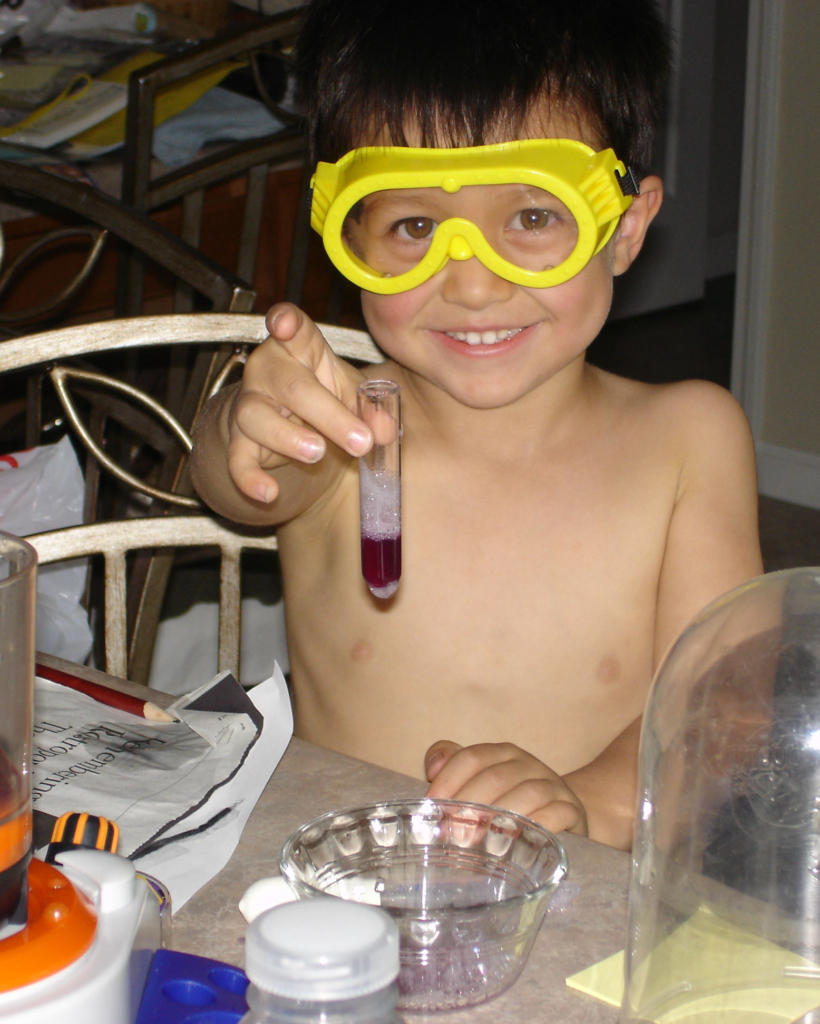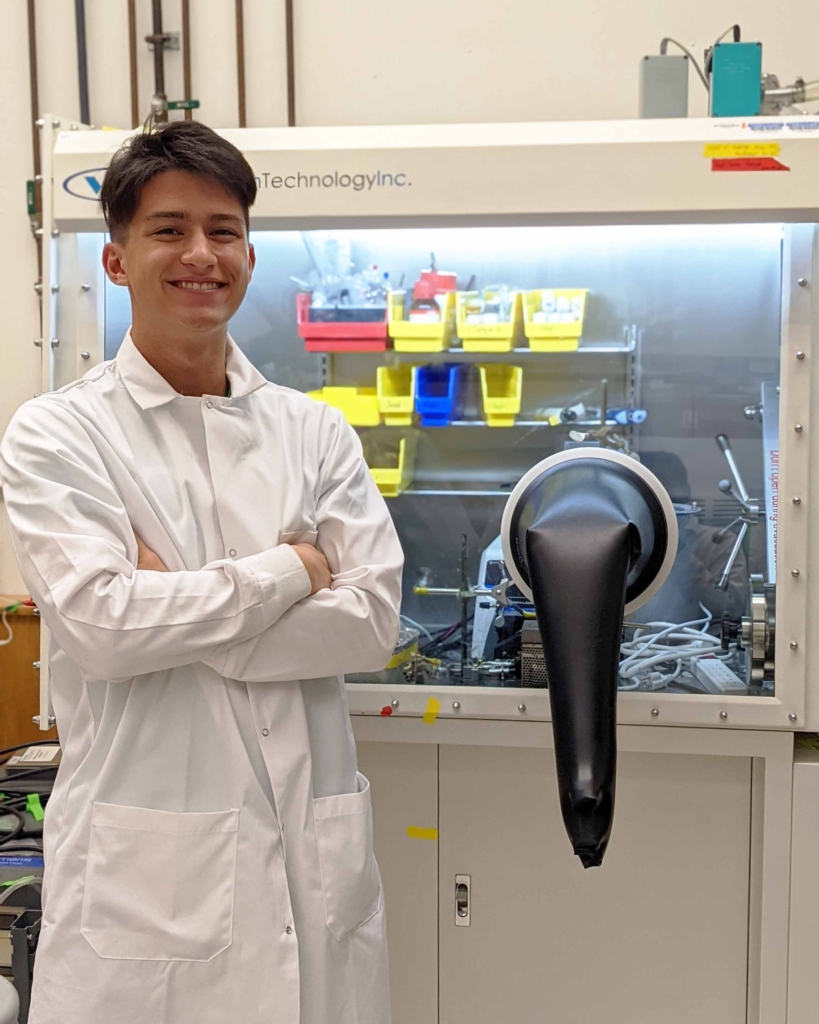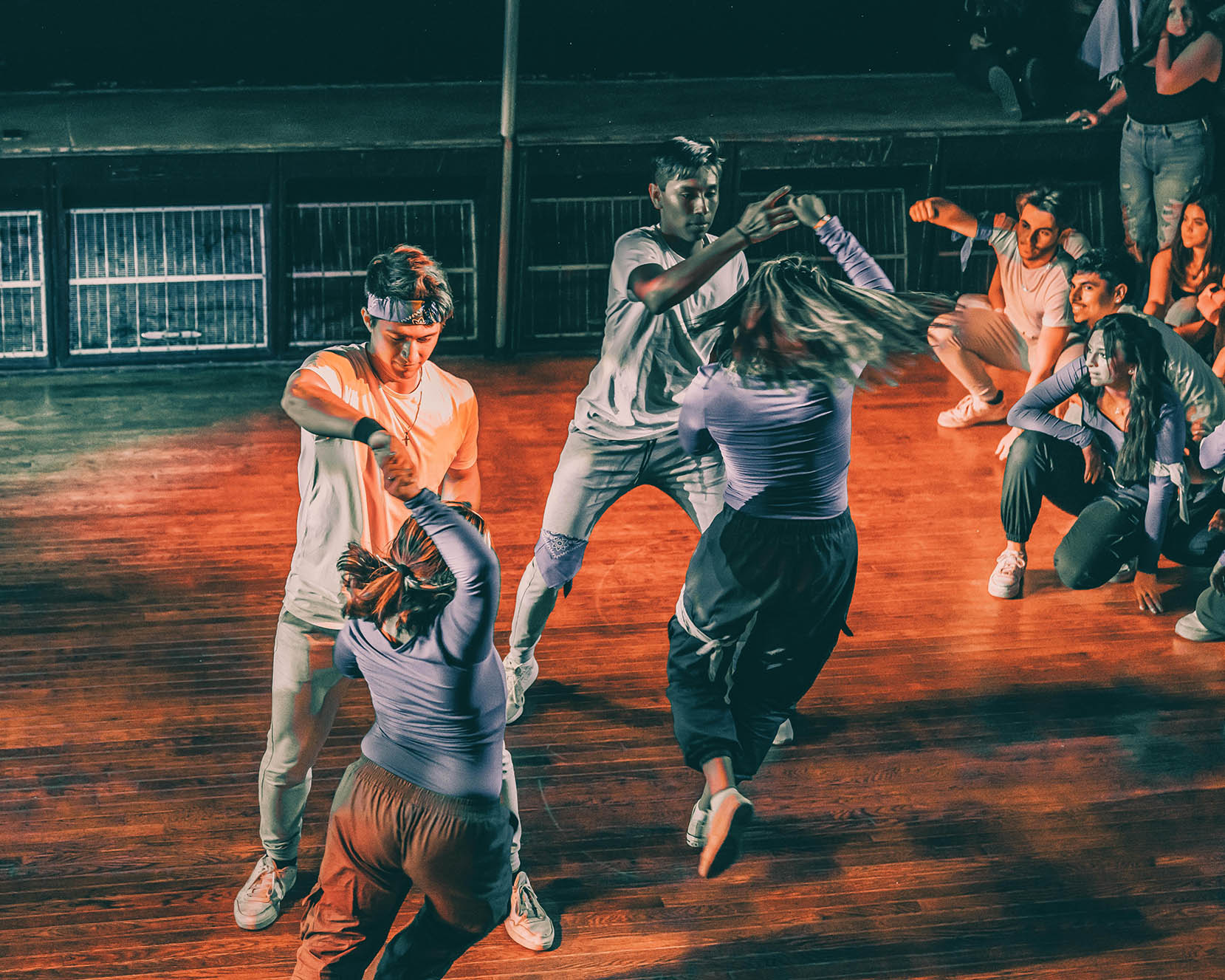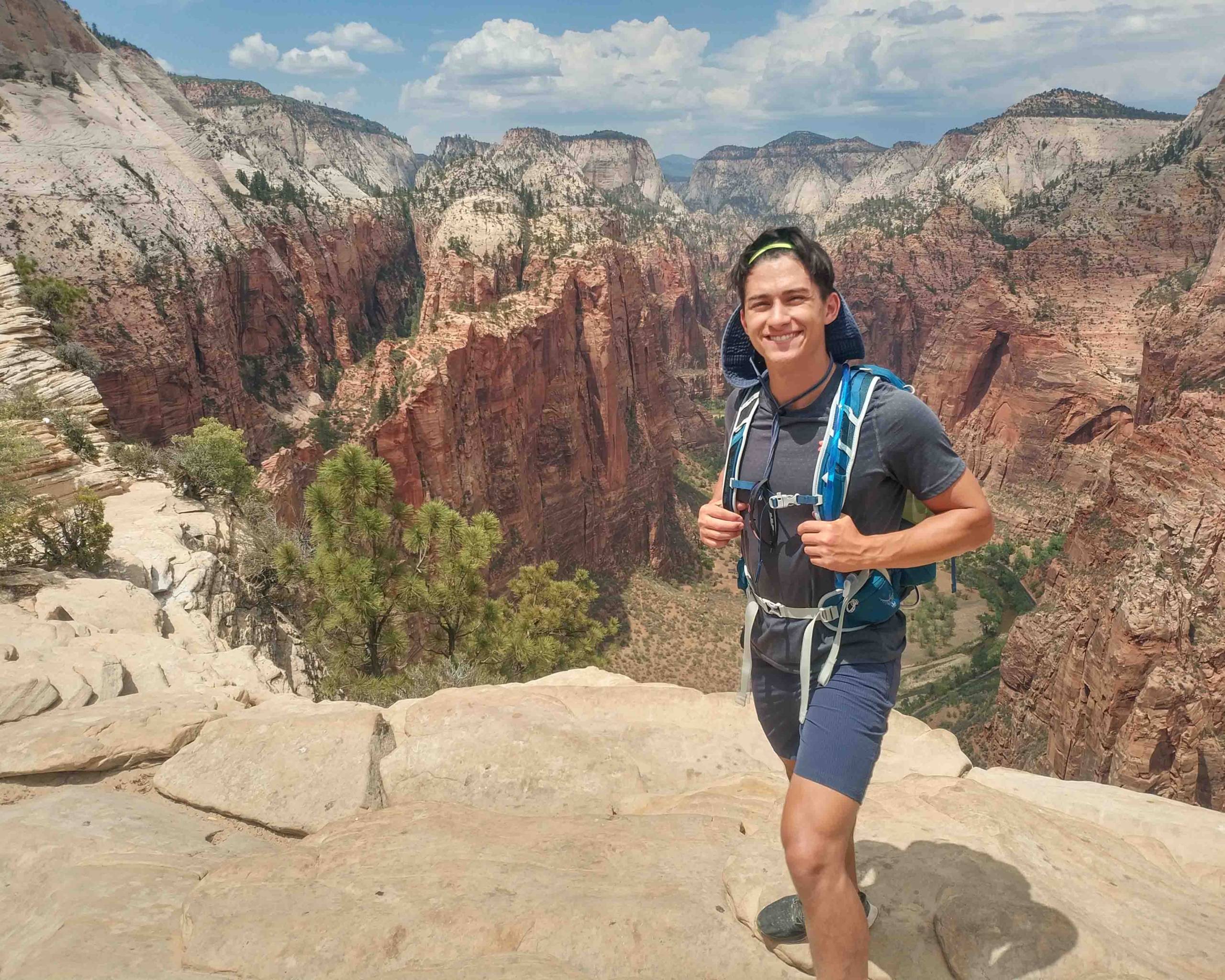To a lot of people, chemistry is just a class they take in high school—something they make it through and never look back. To Curtis, it’s a beautiful, enlightening, and quantifiable way to view the world.
“Everything at its roots is chemistry,” Curtis says.
Even before he knew chemistry would give him tools for discovery, curiosity about the world consumed Curtis. From wondering why he had food allergies to watching TV shows about scientific discovery, he ate up every bit of knowledge he could looking for answers.


And, with a chemistry professor for a mom, it didn’t take long for chemistry to enter the equation. Although she never pushed Curtis to follow in her footsteps, she did introduce him to the science in an indirect way: through the UIUC chemistry department’s annual Holiday Magic Show.
“Right around Christmas every year, [my family] would go to the Holiday Magic Show. I saw glasses being turned into mirrors, exploding balloons, and color-changing solutions. And in the mind of a 10-year-old, this was like magic coming to life.”
With help from a high school teacher who gave him the freedom to explore, Curtis started experimenting with that magic himself. In a short time, he went from having fun to taking his studies a bit more seriously.
“[My friends and I] wrote a paper about a carbon-capture device that was completely renewable and could work with very high efficiency. That was my first exposure to electrochemistry. The whole process used only electricity, which I thought was really, really cool.”
Although most people wait until they have a few years of college under their belt to find a specialization, Curtis was hooked and wanted to learn more right away.
“I decided to reach out to a professor who did electrochemistry at the U of I, Dr. Rodriguez- Lopez. And I was like, ‘Hey, I’m really interested in solving problems with electrochemistry. Can I sit in on some of your meetings and start getting involved in the lab?’ And he said, ‘Absolutely.’”
After spending his senior year of high school observing and practicing with simulations, Curtis was ready to dive in when he started his first year at UIUC. Before long, he started working on his own projects, studying the solvation shells of ions in batteries.
“By trying to understand how [the structure around the ions] changes, we can better understand how batteries work and what is the best way to make them more efficient.”
It’s easy to imagine that a first-year student would be intimated to work alongside professors and graduate students, but Curtis emphasized how comfortable he’s felt since day one. In fact, he says the relaxed environment is one of his favorite things about working in the Rodriguez-Lopez lab.
“I am right alongside other researchers, doing my own work, helping them do their work, and feeding off their knowledge. … It’s a good environment.”
Every lab on campus has a unique atmosphere, but that’s no reason to be intimidated. Curtis’s advice for undergraduate students hoping to get involved in research is universal: The first step is realizing professors are people too and love discussing their work with the next generation of scientists.
“They’re at the top of their field, but they’re human. They’re people who want to help people. There’s no reason why you should not reach out [to] make that connection.”
Take it from Curtis, who found a warm welcome from a lab full of professors and PhD candidates even as a high school student. You can also take Curtis’s word that between research, classes, and all his other activities, he’s a very busy student.


“I work as an undergraduate research ambassador with the Office of Undergraduate Research. … That’s a pretty cool job. I also coach track at a local high school, and I’m a competitive Latin dancer.”
Although he finds enjoyment in everything he does, he admits he sometimes struggles to find a balance between all of his commitments. As he’s gotten older, he’s learning to keep it all in check.
“Oftentimes, I keep myself a little too busy … I think what I tell myself is that if I really want to do something, I will always make time for it.”
With such a full plate, Curtis does his best to take life one day at a time, but he sees the future on the horizon. Although his experience lies in electrochemistry, he’s open to exploring all different types of science as he continues his education.
“I would like to continue doing chemistry research and go to grad school and try and get my PhD in chemistry. … After that, I would actually like to work in the space industry. And then the really big goal is, I would like to be an astronaut if I were given the opportunity.”
No matter where in the solar system Curtis’s career takes him, the curiosity that brought him to chemistry in the first place is always there to drive him forward.
“Your heartbeat is an oscillating chemical reaction. The reason why trees can respirate and create oxygen that we breathe is because of chemistry. Even the wood in the desk that my laptop is on right now has chemistry involved. If people want to learn about the world [and] how to connect things together, it’s chemistry.”